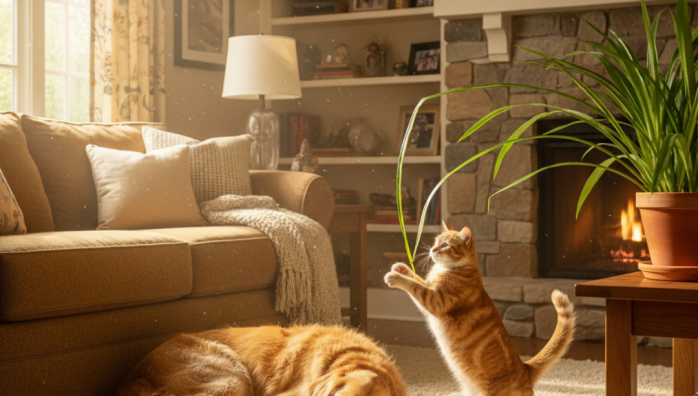Safe Houseplants for Curious Cats and Dogs
by admin in Pet Care Basics 21 - Last Update November 21, 2025

I\'ll never forget the panic I felt when I walked in to find my new kitten, Leo, chewing on the leaf of a houseplant I\'d just been gifted. My heart dropped. I had no idea if it was toxic. That scare was a wake-up call, and it sent me down a deep rabbit hole of research to ensure my home was a true sanctuary for all its inhabitants, furry or not. It turns out, creating a beautiful indoor jungle that\'s also completely safe for our four-legged family members is easier than you might think.
Why choosing pet-safe plants is non-negotiable
Honestly, I used to think a little nibble here and there wasn\'t a big deal. I was wrong. Many common houseplants, like lilies, sago palms, and dieffenbachia, can cause anything from mild stomach upset to severe, life-threatening reactions in cats and dogs. Their natural curiosity and instinct to chew means the risk is always there. For me, the peace of mind knowing that a stray munch won\'t result in an emergency vet visit is priceless. It\'s a simple step we can take to be responsible and loving pet parents.
My go-to list of beautiful and safe houseplants
Over the years, I\'ve curated a collection of plants that are both gorgeous and completely non-toxic. These are a few of my tried-and-true favorites that thrive indoors and won\'t harm your pets.
The resilient spider plant (chlorophytum comosum)
This is the classic for a reason! It\'s incredibly forgiving for new plant owners and its cascading little \'spiderettes\' are fascinating. My dog completely ignores it, and my cat loves to bat at the little plantlets, which is perfectly safe. Plus, it\'s a fantastic air purifier.
The lush boston fern (nephrolepis exaltata)
If you want to add a touch of lush, feathery greenery, the Boston Fern is perfect. They love humidity, so they\'re great for a bathroom. I keep one on a high shelf, and its flowing fronds create a wonderful, calming atmosphere. It\'s completely non-toxic and adds a ton of texture to a room.
The lucky money tree (pachira aquatica)
I love the look of the braided trunk on these plants. They\'re considered a symbol of good fortune, but for me, the real luck is that they are 100% safe for my pets. They\'re pretty easy to care for as long as you don\'t overwater them, a lesson I learned the hard way with my first one!
The colorful prayer plant (maranta leuconeura)
This one is just fascinating to watch. The leaves fold up at night, like hands in prayer. The intricate patterns and flashes of red and green are stunning. It\'s a beautiful, low-growing plant that poses no threat to curious noses or paws.
A quick tip for double-checking plant safety
Before I bring any new plant into my home, I have one non-negotiable rule: I check it against the ASPCA\'s toxic and non-toxic plant list. It\'s an exhaustive and trustworthy resource that I keep bookmarked on my phone. When in doubt, a quick search there gives me an immediate answer. It\'s the best way to be absolutely certain. Creating a pet-friendly home doesn\'t mean you have to give up on your love for plants; it just means choosing them with a little extra care and knowledge.














